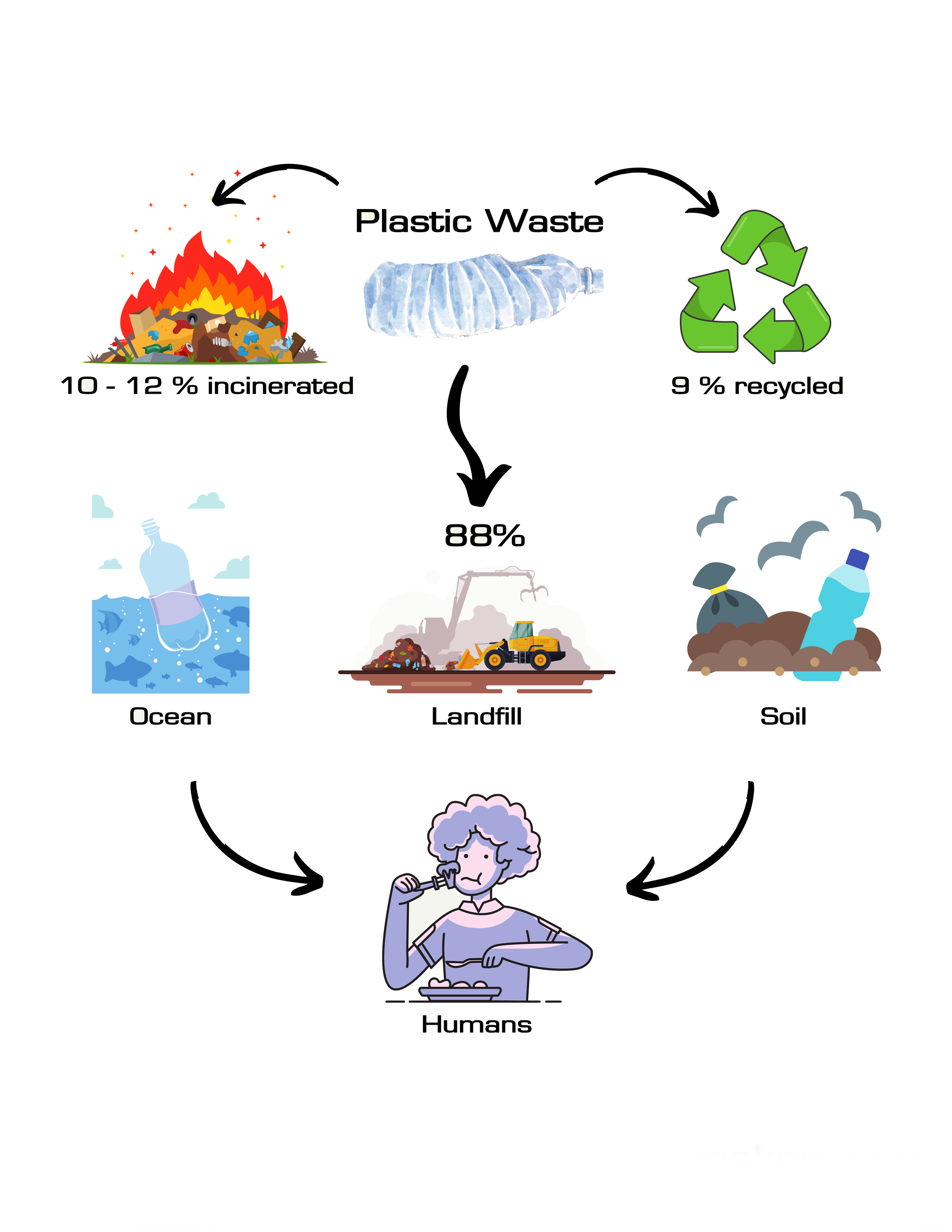
Plastic pollution is everyone’s problem.
Numbers on plastic
As it sits today a very small percentage of plastics are processed (9% recycled,10-12% incinerated) in responsible ways. Majority of the plastic is destined for the Landfill (88%).
That is nearly 2.8 million tons of plastic waste a year in Canada alone. About 30% of that are single use plastics.
(source: oceana.ca)
Plastics can take anywhere from a 100 -1000 years to decompose.
Cost of neglect
A lot of this unmanaged plastic finds its way into drainage systems, rivers and eventually the oceans. Along the way plastic breaks down into micro/nano particles that infiltrate organic matter, ecosystems and farmland. This poses health risks to all organisms that are exposed including humans.
The plastic that ends up in the land fill still has negative affects. Depending on how the landfill is managed, toxins from plastics mixed with other hazardous waste can mix and leach out into the surrounding landscape causing harm to ecosystems and water tables.
A pathway out
Given the reasons mentioned above and many more we decided to act:
Capturing plastic at the source
Keep the plastic in a circular system
Finding replacements for plastic
More on Plastics:
Plastic statistics - ocean.ca, plasticocean, gov. of Canada
Effects of plastics on reproductive development - Dr. Shanna Swan
Plastics in the soil - Environmental health news
Microplastics in our systems - Microplastics in Seafood and the Implications for Human Health
Marine plastics - https://www.oberk.com/guide-to-marine-plastic-pollution




